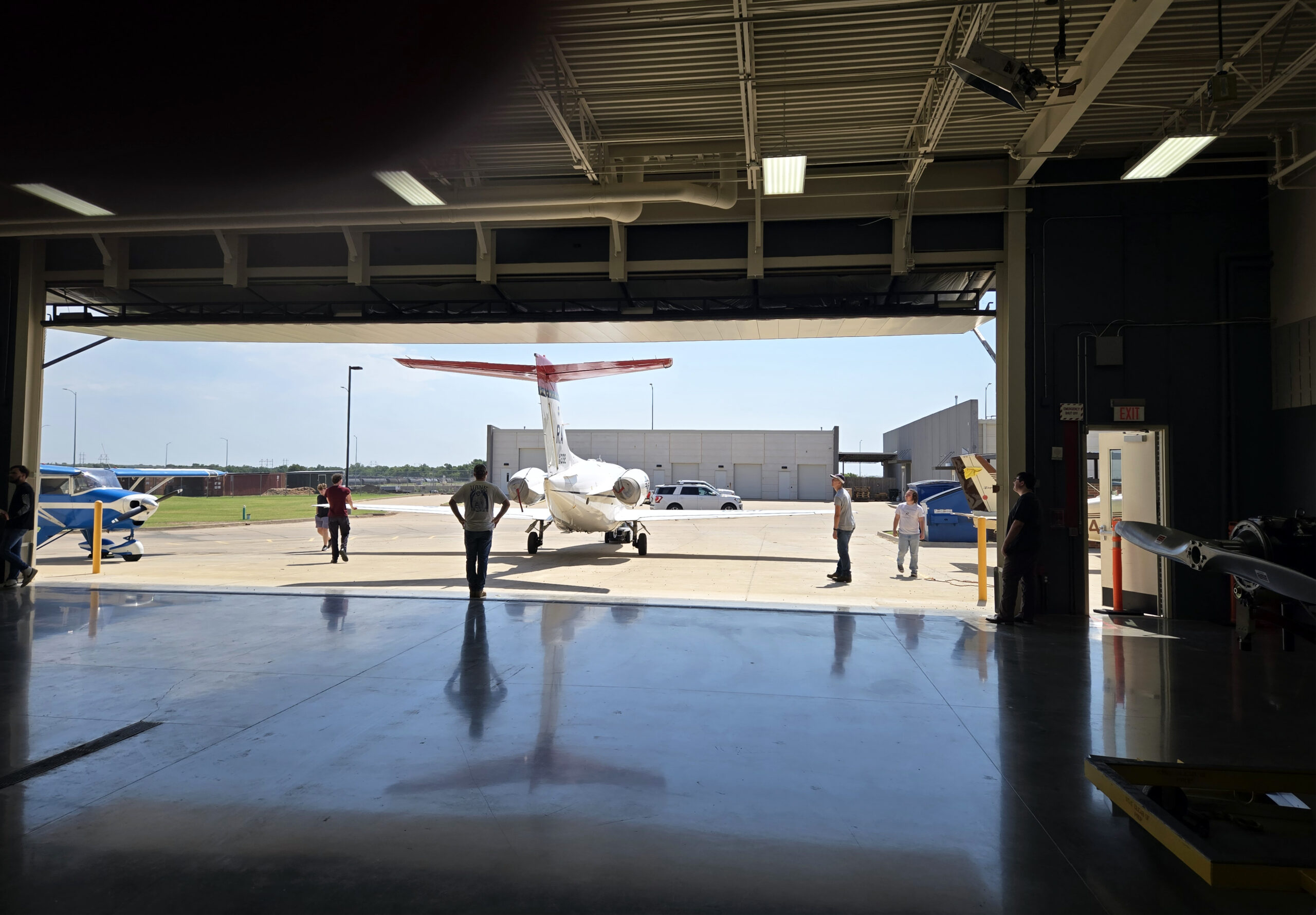A T-1A Jayhawk jet was recently decommissioned by the Air Force and has embarked on its intended final mission.
The plane was allocated to Canadian Valley Technology Center for use in the school’s Aviation Maintenance Technology program.
Air Force personnel Lt. Col. Christine Wagner and Maj. Linsey Ellis logged the jet’s final long-range flight in mid-July from Randolph Air Force Base in San Antonio to C.E. Page Airport near Yukon. The plane will be used as a grounded student trainer.
The aircraft was tethered for taxi from Page Airport to CV Tech’s El Reno Campus on July 14. The route was roughly five miles and included a portion of Cimarron Road over Interstate 40. The final, longer leg of the trip was west on Historic Route 66 to the campus’ hangar.
Canadian County Sheriff’s Deputies closed portions of State Highway 66 as needed during the two-hour commute. Some interested onlookers had cameras in hand as the plane strolled down the highway. Several students enrolled in the maintenance program at CV Tech assisted by removing and replacing signage along the route to accommodate the aircraft’s wingspan of 43 and a half feet.
Most students enrolled in CV Tech’s program are preparing for airframe and powerplant certification after successful program completion and passage of the exam administered by the Federal Aviation Administration. Others plan careers repairing or replacing aircraft sheet metal.
A&P licensure authorizes technicians to perform maintenance and repairs on external (airframe) or internal (engines or powerplants) that meet FAA standards, said Rocke Tyler, one of CV Tech’s three program instructors.
The Air Force still utilizes the T-1A to ready pilots for flying much larger C5 and C17 transport planes, he said.
The Pentagon intends to retire its T-1A fleet and replace them with less costly simulators. The aircraft is the first jet to sit in CV Tech’s hangar. Aviation Maintenance was one of the school’s original 12 full-time programs when the doors opened in 1970. Hundreds of aircraft mechanics have prepared for aviation industry careers at CV Tech since that time.
“We looked into acquiring a jet small enough to go through our hangar door,” Tyler said. “This aircraft also requires landing on a runway at least 6,000 feet in length.”
He said the T1-A has a civilian brother, the Beech 400A, which sells for about $1 million in private transactions.
“This is much more of a civilian aircraft that was put into military service,” he said. “That’s great for us, because most of our students go into civilian aircraft maintenance.”
Another military aircraft already occupies CV Tech’s on-campus hangar. A single-prop T-28C was donated to the school a couple years ago. The T-28C was previously used by pilots for practicing takeoffs and landings on naval carriers.
The T-1A is powered by twin turbofan engines enabling an operating speed of 538 mph and a ceiling of 41,000 feet, according to information supplied by the Air Force. The initial cost was $4.1 million.
CV Tech’s T-1A is a 1992 Beechcraft, which features a red tail tip and a single navy stripe with yellow stars. An exterior decal beneath the cockpit reads, “Tuskegee Airmen.” Both the tail design and the decal pay homage to the famous airmen and pilots who served in the U.S. Army Air Forces in World War II.

